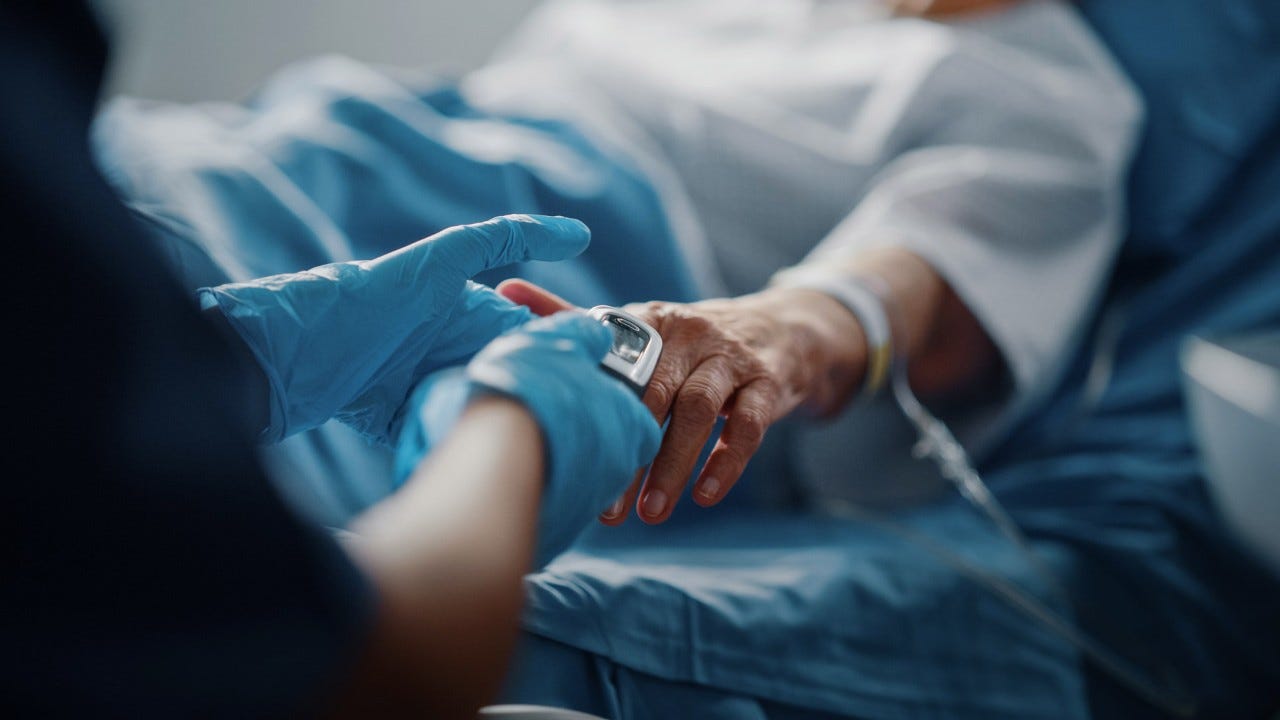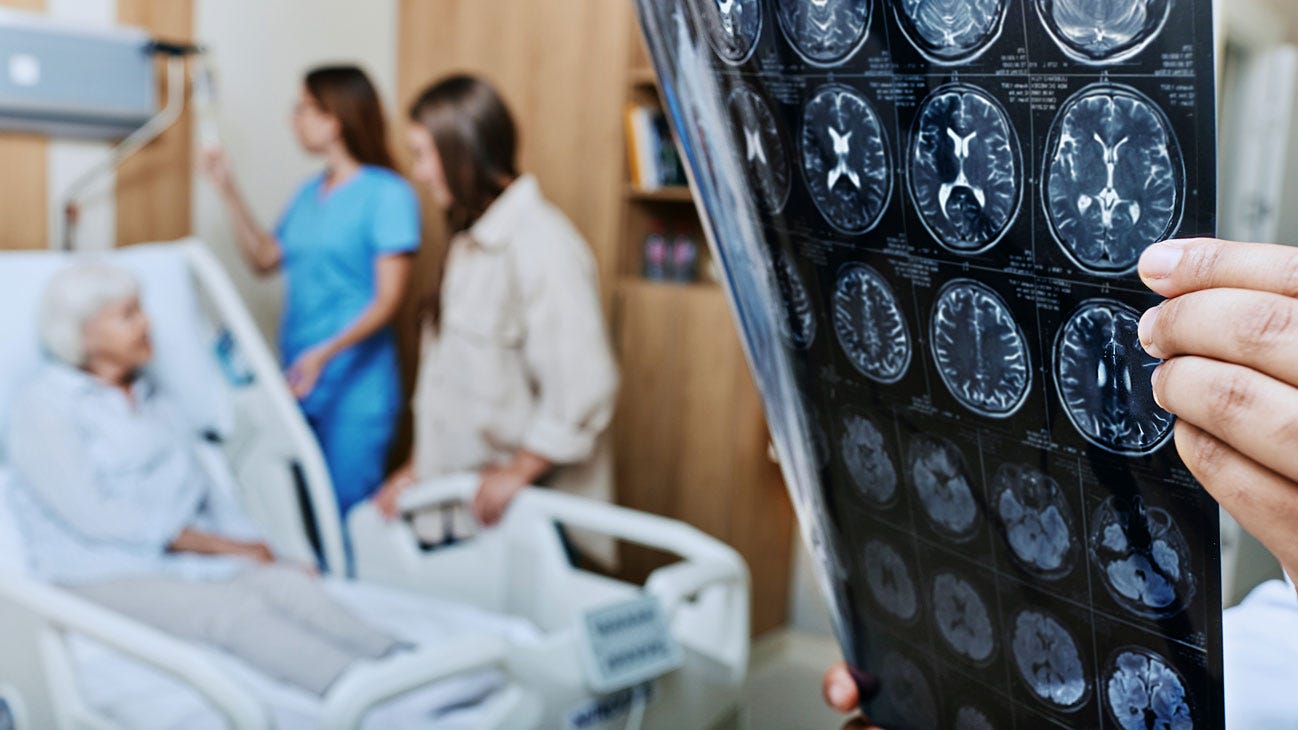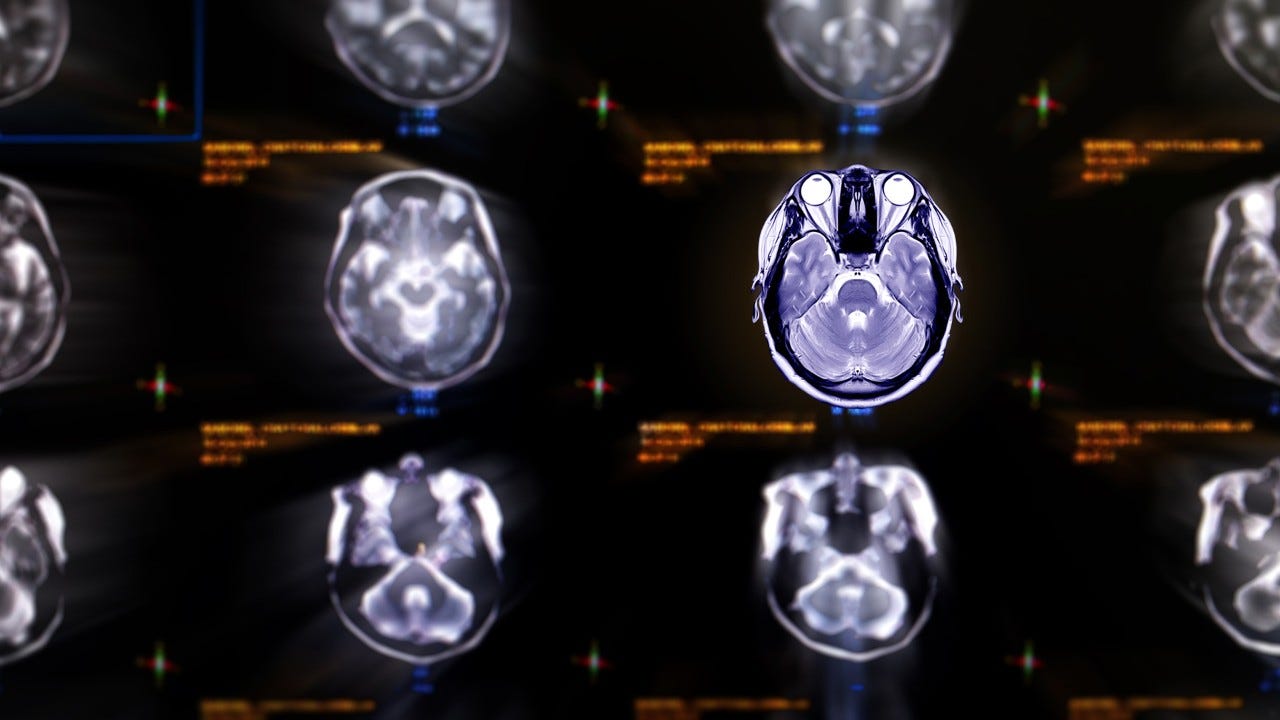A stroke changes everything
Strokes happen without warning and can turn life upside down. Getting help quickly and a healthy lifestyle are crucial to reduce the risk of having a stroke and optimising the chances of recovery.

A stroke can happen in an instant and turn life completely upside down. Every year in Switzerland, around 16,000 people suffer from a stroke, often completely out of the blue. In most cases, a blood clot blocks the vessels or a vessel bursts and floods the brain with blood.
In sensitive areas of the brains, even minor damage can be life-threatening. Statistics show that 5 to 10 percent of patients die within four weeks of having a stroke, rising to 15 to 20 percent within the first year. For survivors, life is often changed forever. Around half of patients suffer permanent damage and a third are dependent on outside help. A stroke is therefore not only one of the most common causes of death, but also one of the main causes of long-term disability.
In the event of a stroke, a quick response can mean the difference between life and death, a speedy recovery or lifelong restrictions. “If a stroke is suspected, you should always call the emergency number 144. Better safe than sorry”, says Professor Hakan Sarikaya, senior consultant at the department of neurology at the Inselspital university hospital in Bern and member of the Swiss Heart Foundation.
A stroke: when blood flow to the brain is disrupted
During a stroke, the blood supply to certain regions of the brain is suddenly interrupted. Insufficient blood flow, also known as an ischaemic stroke, is responsible for around 85 percent of all strokes. In this case, a blood clot or narrowed artery blocks the blood flow to a specific region of the brain. Just under 15 percent of cases are haemorrhagic strokes, which is when a blood vessel in the brain or between the meninges bursts, causing blood to leak into the surrounding tissue.
Causes of strokes: how to reduce the risk by 80 percent
One reason strokes are so dangerous is that they can happen suddenly and without warning. Genetic disposition and age are key risk factors, with the number of stroke patients rising sharply above the age of 60. But senior consultant Hakan Sarikaya explains that it’s wrong to believe that age alone is responsible for strokes and that we can’t do anything to prevent them. In fact, an international study has shown that the risk of a stroke can be reduced by 80 percent if you reduce your own risk factors:
-
High blood pressure
High blood pressure puts a strain on the blood vessels, causes arteriosclerosis and narrows the arteries. Regular check-ups and medication are essential to reduce this risk factor.
-
Nicotine
Smoking damages the blood vessels, promotes arteriosclerosis and significantly increases the risk of stroke. It thickens the blood, constricts the blood vessels and increases the tendency to clot.
-
Alcohol
Binge drinking or drinking regularly not only increases the risk of stroke, but also the risk of liver and heart disease.
-
Overweight
In many cases, a lack of exercise and being overweight go hand in hand and contribute to the development of high blood pressure, diabetes and arteriosclerosis. Hakan Sarikaya therefore recommends getting regular exercise – at least 30 minutes of endurance sport three times a week.
-
Lipid metabolic disorders
A high cholesterol level or other blood lipid abnormalities increase the risk of arteriosclerosis and therefore of a stroke. A healthy diet and medication can reduce these values. Stroke expert Sarikaya recommends eating a low-salt Mediterranean diet with little red meat.
-
Diabetes
Blood sugar levels are permanently elevated as a result of the disease, which damages the blood vessels and increases the risk of arteriosclerosis and stroke.
-
Cardiovascular diseases
Cardiac arrhythmias increase the risk of stroke as they promote the formation of blood clots. Timely diagnosis and treatment are crucial.
-
Sleep
Experts recommend that you sleep for six to eight hours a night. If you’re often tired during the day or notice irregular snoring followed by pauses in breathing, you should have this checked out by a specialist.
“you should always call the emergency number 144. Better safe than sorry.”
Correctly interpreting stroke symptoms
With a stroke, every second counts, which makes it all the more important to interpret the symptoms correctly. Sudden hearing loss, one-sided paralysis and acute difficulty seeing or speaking are signs of a stroke. To check whether it really is a stroke, experts recommend doing the FAST test.
- F stands for face: Ask the person to smile. If one side of the face droops, this is an indication of possible paralysis.
- A stands for arms: Ask the person to raise both arms. If one arm falls or begins to drop, then this could be a sign of a stroke.
- S stands for speech: Ask the person to repeat a simple sentence. If they can’t speak at all or slur their words, this is also a sign of a stroke.
- T stands for time: Don’t wait to see whether the symptoms improve, but call an ambulance (144) IMMEDIATELY!
Quick help makes a big difference
While you’re waiting for the doctor, you should keep the patient calm and raise their upper body slightly. This can ease their breathing. Loosen any tight clothing, such as a shirt collar or tie, to remove any extra pressure. Don’t give them anything to eat or drink, as this can cause suffocation.
If the patient is unconscious but still breathing, it’s best to put them in the recovery position. Lay the patient on their side, with the paralysed side to the ground. This position keeps the airways clear and prevents the patient from suffocating on their saliva or vomit.
Treatment for strokes
Once the ambulance arrives, the patient is transported to the nearest stroke unit. With ischaemic strokes caused by a blood clot, the treatment focuses on removing the clot and restoring the blood flow. This can be done with medication or by inserting a catheter.
With haemorrhagic strokes caused by a cerebral haemorrhage, treatment aims to regulate blood pressure and intracranial pressure and control the bleeding. Complete bed rest and measures to prevent an increase in pressure are crucial. Surgery may be necessary for extensive cerebral haemorrhages.
Once the acute danger has been averted, the aim is to prevent another stroke. In addition to medication, other measures play an important role. Doctors recommend a healthy diet, regular exercise, weight loss and giving up smoking and drinking.
These changes help lower blood pressure and cholesterol and thus reduce the risk of another stroke. A healthy lifestyle is an important supplement to treatment with medication and plays an important role in preventing strokes.



